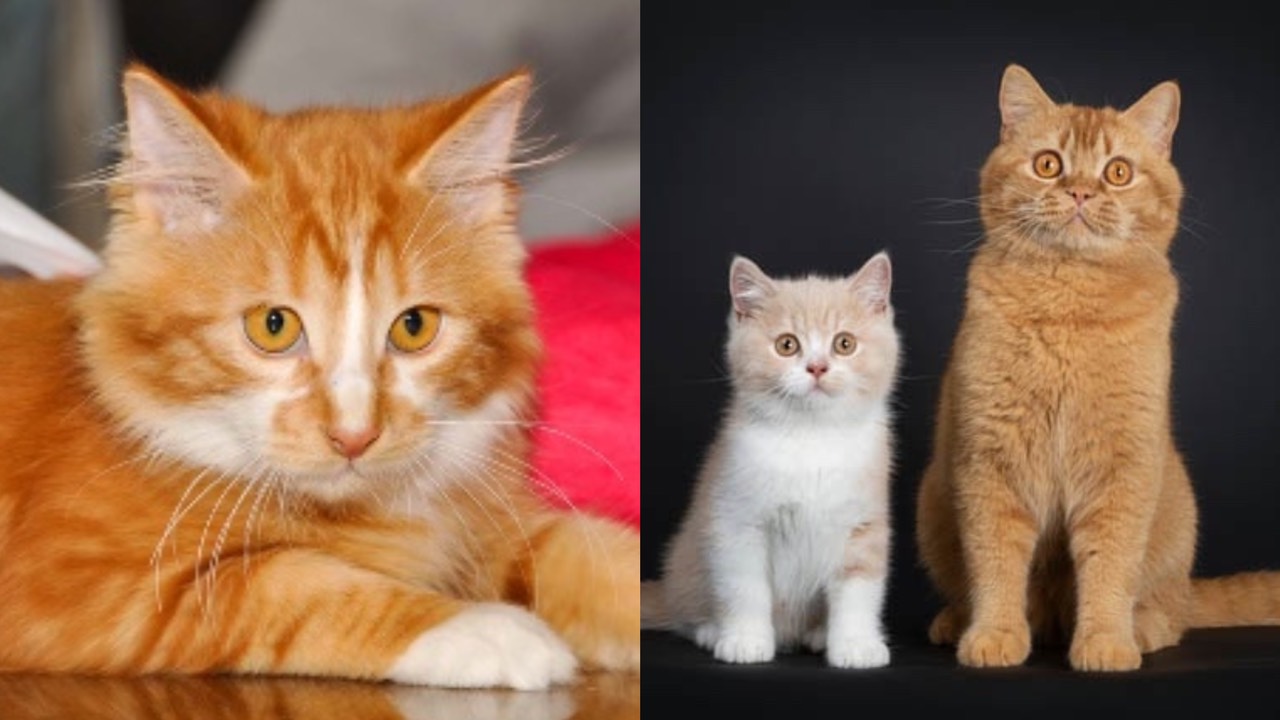
There are anecdotal studies showing that cat owners view orange (ginger) cats as more friendly: a survey run by UC Davis found people were more likely to assign positive personality traits to orange cats. Although you can’t judge a cat by color alone, the study found out that orange cats and bi-colored cats were perceived as more friendly (On the other end, black cats, white cats and tri-colored cats were considered more likely to be antisocial). Perhaps this is due to Garfield, the popular orange cat cartoon character (more on Garfield later in this article!).
This article is a comprehensive review of the most popular orange cat breeds, along with a quick review of stunning orange coat patterns found in cats such as Calico cats or Tortoiseshell cats. let’s have a look!
Popular orange (ginger) cat breeds
1. American Curl
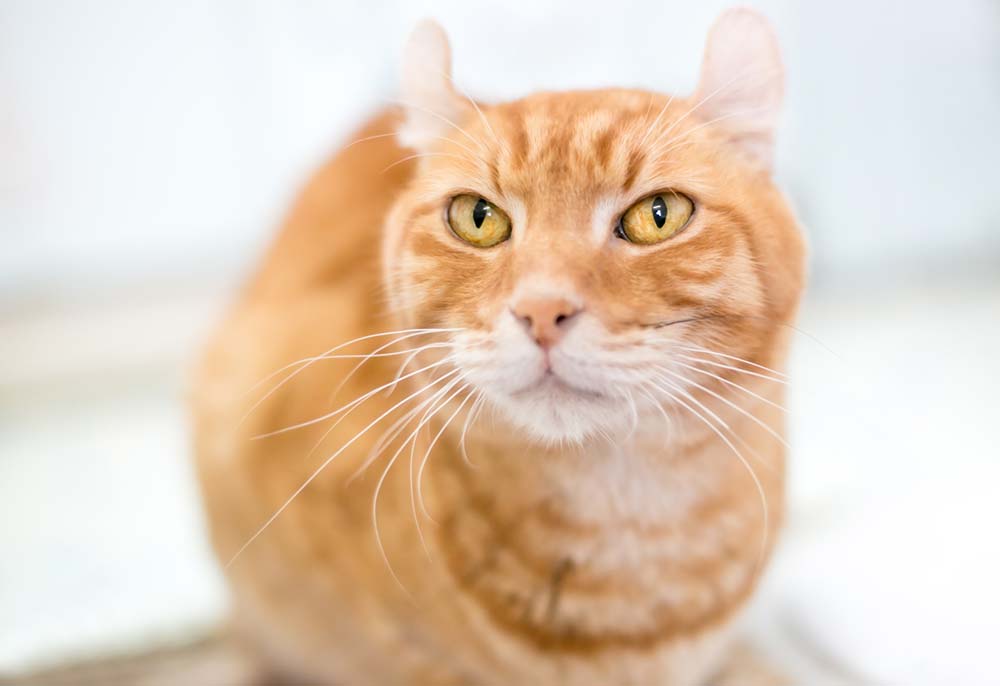
The most distinctive trait is their unusual ears, which curl back from the face. This is the result of a spontaneous mutation in California. American Curl kittens are born with straight ears but start curling after forty-eight hours. Show cats must have ears that curl between 90 to 180 degrees.
They don’t reach maturity until two to three years of age. Males end up between seven to ten pounds. Females end up between five to eight pounds. The American Curl is not prone to any particular health issues. However, their ear cartilage could be easily damaged if not handled carefully. View American Curl breed profile and images.
2. Manx

Manx, or Manks, originated on the Isle of Man. Their prominent feature is a short stub of a tail or being tailless. Additionally, they have elongated hind legs and a rounded head. The Manx comes in all coat colors. They all have a thick, double-layered coat. They are known as skilled hunters and are often used to help eradicate rodent problems. They are social and active. View Manx breed profile and images.
3. Norwegian forest cat
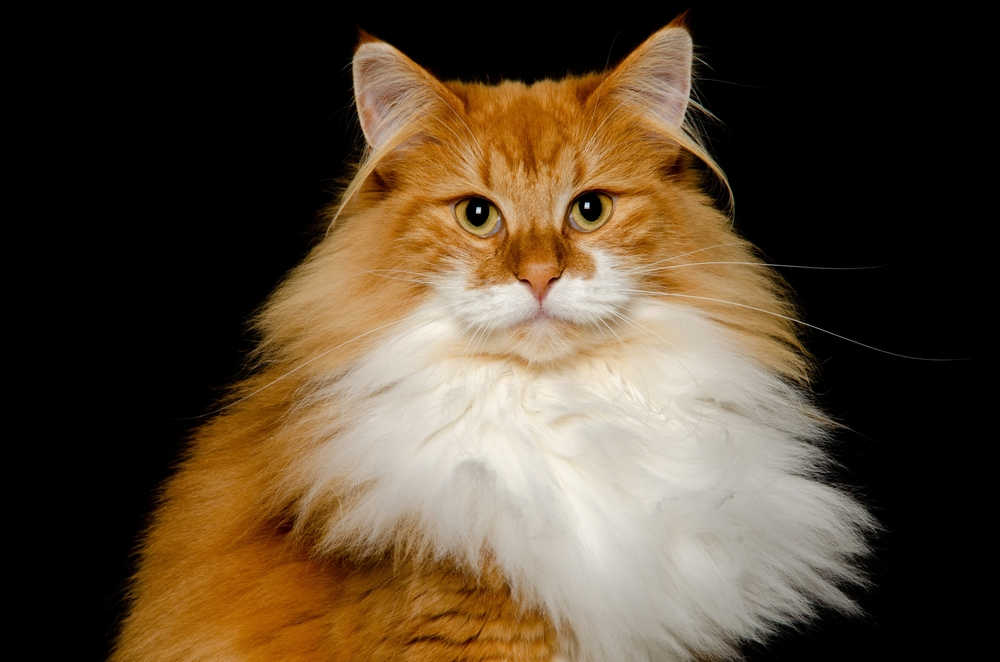
The Norwegian forest cat is a large cat that originated in Northern Europe. The long coat is adapted to keep these cats warm in the freezing Northern Hemisphere winters. The Norwegian forest cat is a large heavy boned cat with a long, double coat. The Norwegian forest cat comes in almost every color and pattern, including orange, except for color point and the dilute colors chocolate and lilac. View Norwegian forest cat breed profile and images.
4. British Shorthair
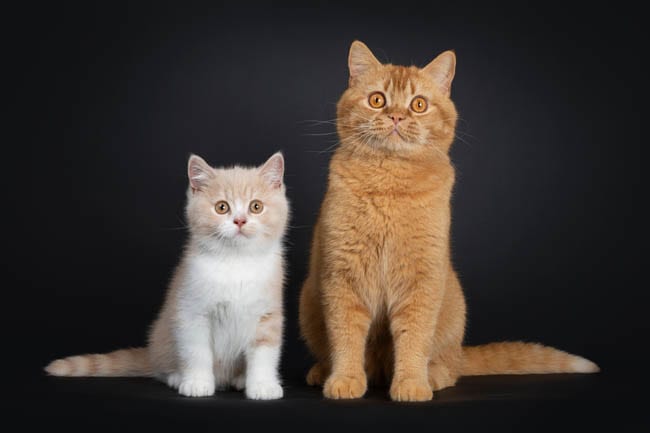
Breed overview
- Colors: All colors and patterns, including orange. Blue (grey) is the most well recognized
- Energy: Low to medium
- Grooming: Weekly
Personality: The British Shorthair is known for its amiable, quiet and laid back personality. While British Shorthairs enjoy the company of their human family, they have an independent streak and are happy to amuse themselves. This laid-back personality makes the British Shorthair a great choice for families. If children are too noisy, the British Shorthair will remove himself to somewhere quieter. Their independence also means that they don’t tend to suffer from separation anxiety if left on their own during the day.
Appearance: British Shorthairs are a large, cobby breed with a broad chest and strong legs. The large, round head has a good breadth of skull, a short, straight nose and large, well-opened eyes. View British Shorthair breed profile and images.
5. Devon Rex
Breed overview
- Colors: All coat colours and patterns, including orange
- Energy: Medium to high
- Grooming: Weekly
Personality: The Devon Rex is a curious, mischievous, active and playful cat with a love of heights, earning itself the nickname ‘monkey in cat’s clothing‘. Devon rexes are an extremely people-oriented breed that loves to be close to their human family at all times and will often jump onto their owner’s shoulders. Their loving personality and playful nature make them great companions for families with children. Devon Rexes need to be given plenty of opportunities to burn energy with a range of interactive and puzzle cat toys as well as cat trees or perches to view the world from a height.
Appearance: The Devon Rex is a small to medium cat with a lithe but muscular body and fine boning. Legs are sturdy and the hind legs are slightly longer than the forelegs. This unique cat breed has an elf-shaped head with prominent cheekbones, large low-set ears and oval eyes set wide apart. The coat is short, soft and curly and contains all three types of hair guard, awn and down. Whiskers and eyebrows are short and crinkled. All coat colours and patterns are accepted. View Devon Rex breed profile and images.
6. Exotic Shorthair
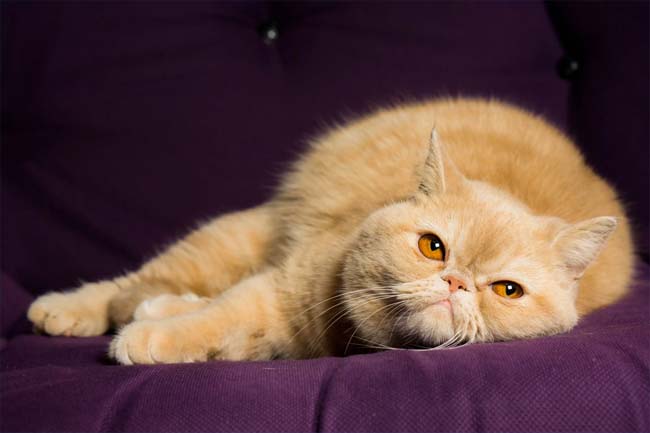
Breed overview
- Colors: All colors and patterns including orange
- Energy: Low to medium
- Grooming: Weekly
Personality: Exotic shorthairs share a similar laid-back and placid personality to the Persian. Their sweet, affectionate and fun-loving nature make them an ideal family pet. Most exotics love to follow their human family around the home but tend to be less demanding than other breeds.
Appearance: The exotic shorthair is a large, cobby breed with a broad chest and low legs. The head round with a sweet and expressive face. The snub-nose has a break between the large round eyes. The dense, thick and plush coat comes in all colours and patterns. View exotic shorthair breed profile and images.
7. Maine Coon
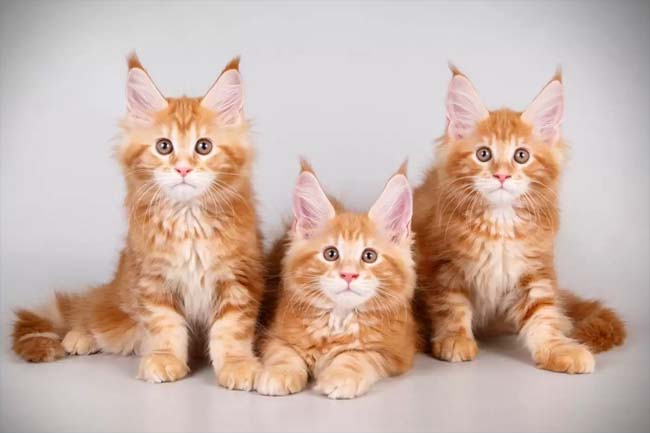
Breed overview
- Colors: Solid, tabby, bi-color and shaded
- Energy: Medium
- Grooming: Daily
- Other names: Coonie, Maine Cat, Maine Trick Cat, American Longhair, American Forest Cat
Personality: Maine coons are known as the gentle giant of the cat world due to their sweet and calm nature. With a dog-like personality, the Maine coon loves to be close to their favorite human and will follow them from room to room. The Maine coon loves to be up high, they also have a love of water.
Appearance: The Maine coon is a large-size, rugged and well-balanced cat with a broad chest and well-muscled body. Tufted ears sit on top of a large and broad head, with wide-set eyes and a visibly square chin. See our article: Main Coon Size Compared to a Normal Cat.
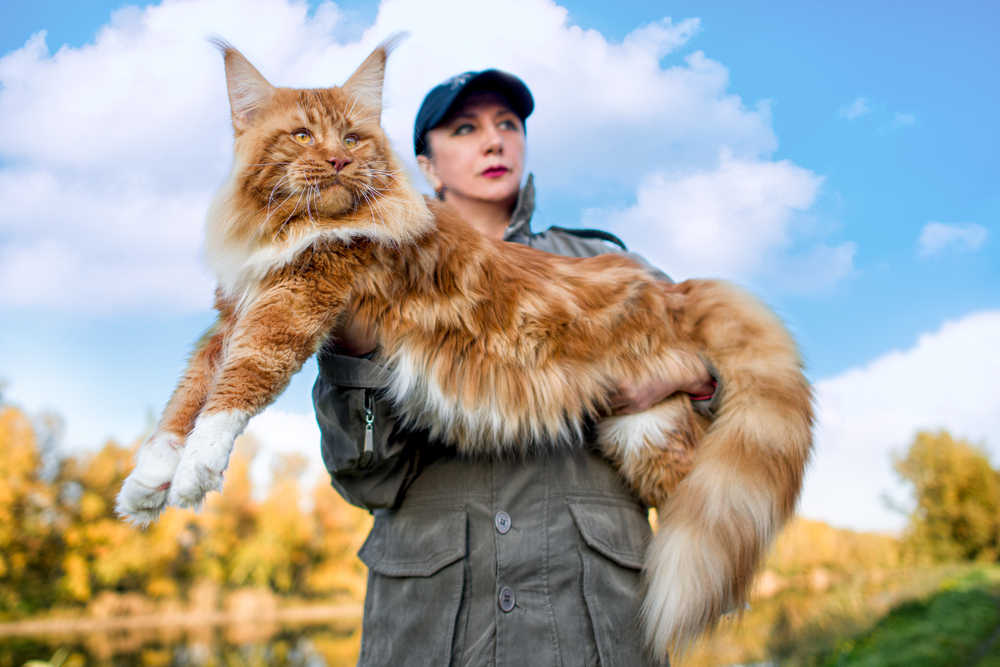
The silky coat is shaggy, with a ruff around the neck and shoulders and a long, plumed tail. It can take up to three years for a Maine coon to reach full maturity. Maine Coons have a silky, shaggy coat with a ruff on the shoulders and a long plumed tail. There is nothing extreme about the Maine Coon apart from its imposing size. View Maine Coon breed profile and images.
8. Munchkin

Breed overview
- Colors: All colors and patterns, including orange. Blue (grey) is the most well recognized
- Energy: Low to medium
- Grooming: Weekly
- Other names: Wiener cat, American Munchkin, Sausage cat, Midget cat, Midget kitty
Personality: Munchkin cats are playful, energetic, outgoing and maintain their kitten-like personality well into adulthood. The munchkin loves company and gets along well with everyone. The short legs do not hamper mobility and Munchkin cats will zoom around the house and can jump, although not as high as normal-legged cats. Munchkins have earned the nickname magpie cats due to their love of shiny objects which they love to hide away.
Appearance: The Munchkin cat is a medium-sized breed with a semi-foreign body, the legs are short with the forelimbs and hindlimbs equal length. The head is a modified wedge, ears are in proportion to the head and round, wide-set eyes. Munchkins can have a long or short coat, in any color and pattern combination. View Munchkin breed profile and images.
9. Oriental shorthair

Breed overview
- Energy: Medium to high
- Colours: All colors and patterns, blue (grey) is the most well recognized
- Grooming: Weekly
- Other names: Foreign shorthair
Personality: Orientals have a similar personality to their Siamese cousin but are generally less intense. They are friendly, confident, outgoing, extremely intelligent and sociable. Unlike the Siamese who often form a strong bond with one member of the family, the oriental shorthair doesn’t tend to play favourites. This makes them the ideal family pet for families with children and other pets.
Appearance: Oriental shorthairs have a long, muscular and tubular body with long, slender legs, oval paws and a long, tapering tail. The head forms an equilateral triangle, with good width between the ears and narrowing to a fine muzzle. Orientals have a straight nose, free from a stop or dip. Ears are large, pricked and wide at the base, continuing the lines of the wedge. Eyes are oriental in shape and slant towards the nose. View oriental shorthair breed profile and images.
10. Persian
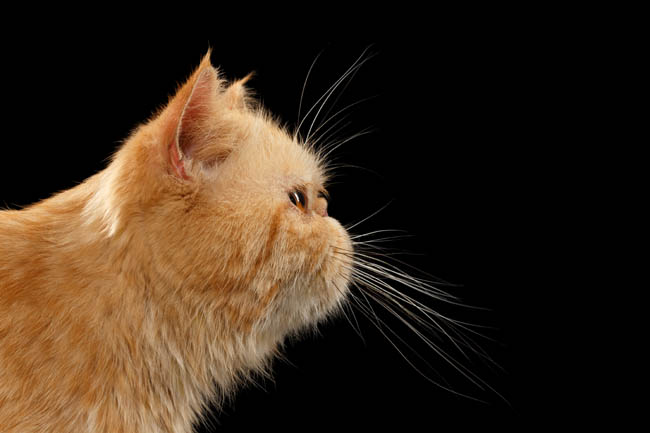
Breed overview
- Colors: All colors and patterns except chinchilla and pointed
- Energy: Low
- Grooming: Daily
Personality: The Persian is a sweet, placid and laid back cat who stays out of trouble. Their gentle and affectionate nature makes them a great cat for older children. Persians have an independent streak and are better able to cope on their own than other breeds. That’s not to say they don’t appreciate the company of their human family too.
Appearance: Persian cats are a large, robust, cobby breed with short, thick legs with large paws. The legs are short and stocky, and the paws are large and round. The Persian head is large and broad, with round, expressive eyes that are set wide apart; ears are small and tufted and set low on the head. View Persian breed profile and images.
11. Scottish Fold
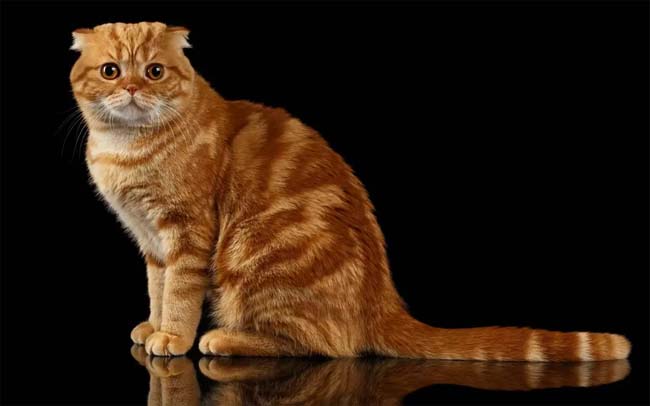
Breed overview
- Colors: All colors and patterns accepted
- Energy: Low
- Grooming: Weekly
Personality: Scottish folds are a well-adjusted, calm, intelligent and sociable and affectionate breed without being overly clingy. Unlike other breeds, the Scottish fold doesn’t play favourites and gets along well with everyone.
Appearance: The Scottish fold is a medium-sized and well-muscled cat with a heavy bone structure. The most prominent feature of the breed is the ears which are wide-set and point down and forwards, which gives the head and face a round appearance. This folding occurs in three levels, like an accordion: Single fold, Double fold or Triple fold. View Scottish fold breed profile and images.
12. Cornish Rex

Cornish Rexes only have one fur coat, while most cats have three. They only have an undercoat, making them prone to hair loss or balding. The fine coat means they are best suited for inside as they are sensitive to weather fluctuations. The original Cornish Rex was from a single genetic mutation in the United Kingdom.
The colors are varied, from white to orange to black. Additionally, they can have color-pointing or tabby patterns. These kittens tend to stay playful throughout their entire life. They are adventurous and brilliant. They love new situations and exploring. If you’re looking for an intelligent companion, these may be the breed for you! View Cornish Rex breed profile and images.
13. Scottish Shorthair

14. American Shorthair
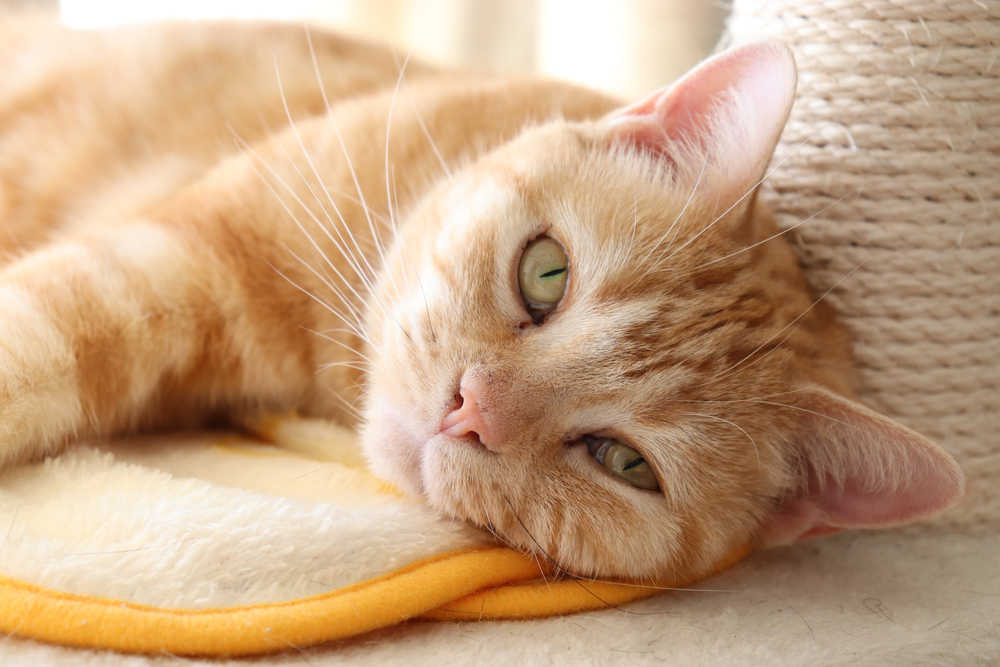
The American shorthair is a compact, muscular and heavy-bodied cat that is slightly longer than it is tall. The chest is broad and deep, and the shoulders are well-developed. The American Shorthair is typically associated with the silver classic tabby, but can also have orange colors. View American Shorthair breed profile.
3 stunning orange cat patterns
1. Calico cats
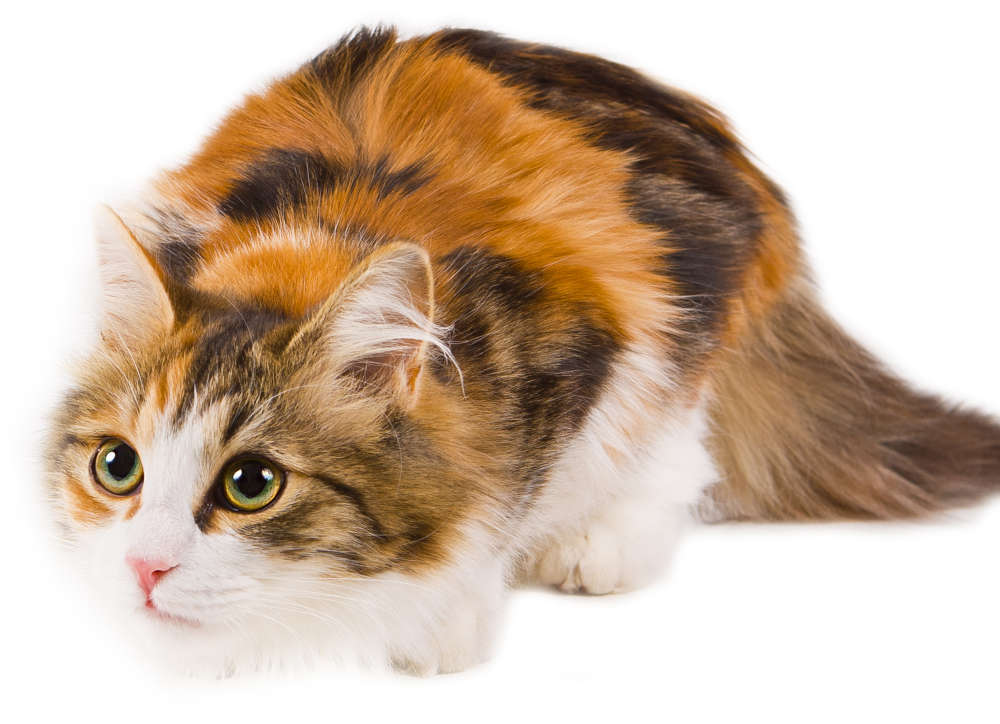
Also known as a tri-colour, calico is a combination of two colours, plus white (which is not a colour, but an absence of colour). This striking coat combination occurs almost exclusively in female cats. View more pictures of Calico cats.
2. Tortoiseshell cats
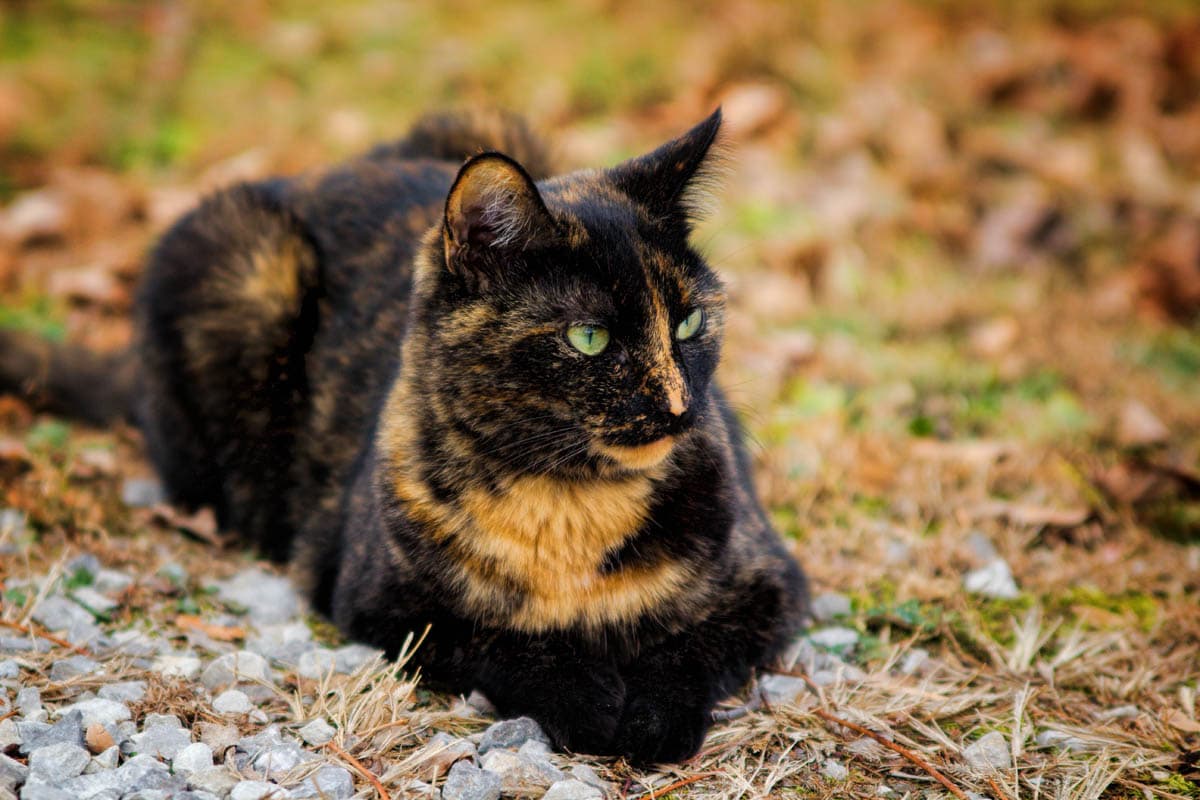
A tortoiseshell cat is a cat with a coat color made up of mottled patches of black, chocolate or grey along with red / orange or cream. This unusual coat pattern is sex-linked and is almost exclusively found in female cats. The most common color combination is black and orange, which consists of almost equal amounts of black to orange. Learn more about Tortoiseshell cats.
3. Marmelade cats
Also known as ginger, orange or red, a marmalade cat is a cat whose fur is made up of a pale orange background and darker orange spots, stripes or swirls. Garfield the cat is undoubtedly the most famous marmalade cat.
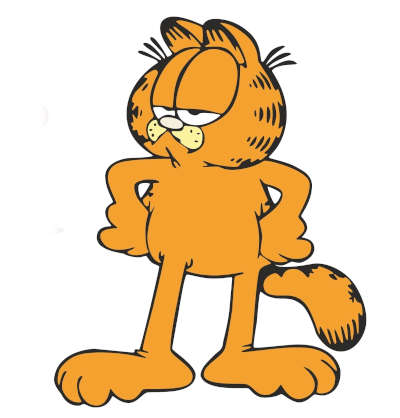
Marmalade occurs in three tabby patterns, mackerel (striped), spotted and classic tabby:
3-1: Mackerel pattern
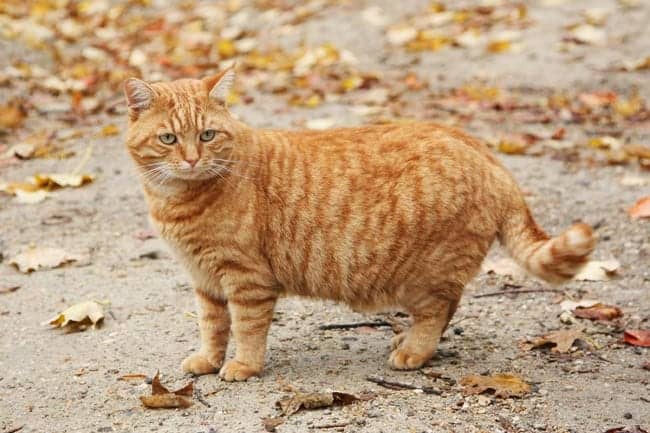
Clearly defined, vertical stripes going around the cat’s body. Mackerel stripes are narrower than those on the classic tabby. Legs have bracelets, and the tail is barred.
3-2: Spotted pattern: The spotted tabby is a variant of the mackerel tabby however a modifier gene breaks the characteristic mackerel stripes up into spots. This combination of spots on a pale background makes the cat look like a miniature leopard.
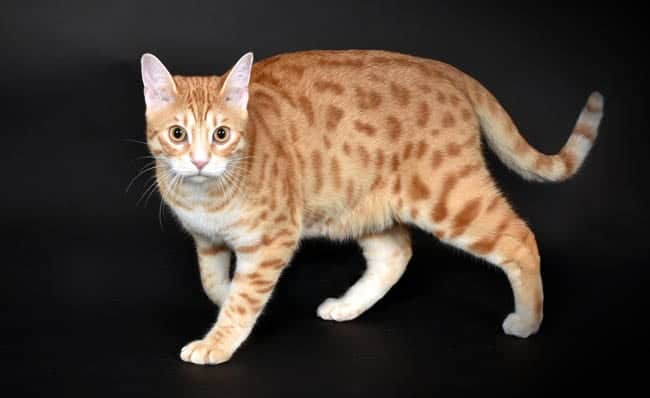
3-3: Classic pattern

Other cat breeds that can have orange coats
Bengal

Bengals are created from breeding the Egyptian Mau with the Asian leopard cat. Their fur has a golden shimmer but may show a variety of marking. The International Cat Association officially recognizes brown spotted, seal lynx point, sepia, silver, and mink spotted tabbies. However, this doesn’t preclude other colorings, such as red or orange.
New York City and Hawaii have restricted the adoption of Bengals. Other places place additional limits on ownership.
They are energetic and playful. Many Bengals are natural retrievers who enjoy playing with water. This breed is not recommended for first-time cat owners due to the great attention and exercise. Bengals are prone to progressive retinal atrophy, an eye condition affecting sight. A study found that one hundred percent of Bengal cats have type A blood.
Abyssinian

The “tabby” coat on these are ticked as the individual hairs are different colors. These cats hail from Abyssinia, which is now Ethiopia. Some mummified Abyssinians were found in ancient Egyptian tombs.
They are long and lean compared to fashion models. The head is wedge-shaped, with the nose and chin forming a vertical line. Their curious attitude encourages lots of play. However, they are in constant motion, not ones to snuggle.
Common health problems include gingivitis, which is an issue with the teeth. Additionally, they are prone to kidney disorders. There were issues with severe blindness due to mutations passed down in the past. However, this has been reduced significantly with testing and careful breeding.
Ocicat

This breed seems wild, but they are domestic. The coloring was established by crossing the Siamese and Abyssinians. They are known for almost shaped eyes and muscular oval-shaped paws. The head is a wedge shape like the Abyssinian, but longer. They have large, thumbprint-shaped spots. The most common color is tawny but significantly varies due to the large ancestry pool.
Ocicats will greet your guest and are very friendly. They can be trained to walk on a leash, fetch, and do other tricks. However, they can require more attention from owners due to their social nature.
Chausie

This breed was created by breeding non-domestic jungle cats with domestic cats. The International Cat Association first recognized it in 1995. Most Chausies are late-generation cats with fully domestic temperaments.
They are usually medium to large. Chausies are built for running and jumping, influencing their long bodies and legs. The ears are broad and tall. The cheekbones are prominent and angular.
Official breed standards allow solid black, black grizzled tabby, and black ticked tabby. However, they can be born with many different colors and patterns due to their large ancestor pool.
They retain playful nature into adulthood but do tend to settle some. They form deep bonds with people and don’t do well with being rehomed. Chausies’ intestinal tracts may be shorter, leading to digestive issues. Additionally, they are prone to food allergies.
Toyger

This unique breed was created by breeding shorthaired tabbies to make a “toy tiger.” The breed was created to inspire people to care about the conservation of tigers in the wild.
Breed standards include a cylindrical muzzle on an oval head, round ears, long and muscular torso, long tail, and more. Colorings accepted include black to brown to tan. However, a bright pumpkin is preferred.
Personality includes being laid back and friendly and getting along well with other animals. They are easily leash trained.
Toygers can suffer from heart murmurs, so purchasing from a reputable breeder is best.
Somali

In the 1940s, Abyssinian kittens were exported to New Zealand and North America. The descendants produced kittens with long coats. Some breeders were appalled at the different appearance, but others were intrigued and continued the breeding.
Bushy tails, almond eyes, and pointed ears characterize the Somali. They are often compared to foxes. The coats can come in twenty colors but tend to be fine and soft.
Common health problems include gingivitis, tooth decay, and renal amyloidosis. Other problems can consist of feline infectious anemia. The most recent health issue is myelodysplasia which can cause anemia.
About orange / ginger cats
Also known as orange, or red, ginger is a common coat color that comprises of a light agouti (ticked) background and darker stripes, sworls or spots. The orange gene is located on the X chromosome, which makes it sex-linked. As males (XY) only have one X chromosome, they will either be orange or non-orange, however, as the female (XX) has two chromosomes, she can be orange if she inherits two copies of the orange gene, or caliby, calico or tortoiseshell if she inherits one copy of orange and one non-orange.
All ginger cats are tabby, but not all tabby cats are ginger. The solid pattern is the result of the non-agouti gene which overlays the agouti base colour with melanin pigment to produce a solid colored cat. The non-agouti gene does not affect phaeomelanin (red), and therefore all ginger cats exhibit the tabby pattern.
Learn more on Cat World:
Why Are All Ginger Cats Tabby?
What is a Marmalade Cat?
What is a Tortoiseshell Cat?
Feature image: Meriluxa/Shutterstock



